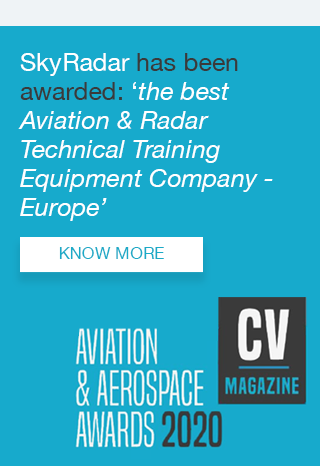Radar has become a key sensor technology in automotive, medicine, automation, and - of course - in air traffic control and homeland security. New skills are needed to make it a success. But still curricula are dominated by dinosaur concepts like phased array, chaff clouds, jamming and electronic counter measures. Hey, let us bury that. And let us educate responsible members of our society to build a peaceful future. We need no backward oriented half-educated dummies, who are an easy prey for ruthless leaders. An appeal ...
A lot has happened in radar technology during the last 20 years. I am just talking about primary radar technology. The technology which we call secondary radar is another important subject, addressed in many articles on this site. But for now I am just talking about the original radar technology, where a radar band beam is transmitted and the returned echo is analyzed.
General Skills Required in Civil Aviation, Defense, Automation, Automotive and Medicine
Important factors in radar education are
- the comprehension of the basic radar principle, of relation of target size, shape, distance, the impact of noise and clutter
- the competence the generate an optimal radar image, optimized on the application. The final implementation might vary, but the skill set will certainly include handling of pulse and Doppler, filtering (STC, C-FAR), FFT and window functions, Doppler processing and Moving Target Detection or Indication. ATC and Military can pretty much focus on Pulse & Doppler. General education, and industry or medicine oriented qualification will require certainly the professional's skill-set to comprise FMCW radars as well.
- in the academic world, further going further, the students need to be able to model, create processing algorithms. So, seamless connections to modelling environments like Matlab are important.
The students and trainees need to be skilled, able to apply, to analyze and synergize. Not just comprehend. So enough time on a training system is required to build the needed routine. A costly radar training equipment where only few people can find sufficient time to learn and the majority of students remains onlooker has missed the requirements of our time.
Future Skills that should enter the radar curriculum

We are educating professional for the future. So let us prepare them also for the technologies which are currently entering the operational world (horizon 1 to 5 years).
On the signal receiving side we have new technologies of signal processing and Artificial Intelligence (Machine Learning). Signal processing is an almost endless playing field. On a monthly basis new solution are entering the market. So the curriculum needs to be open, and training systems need to be extendable.
Key innovations related to emitting signals are radar signal coding, MIMO, or Digital Beam Forming. The training radars should at least be extendable to these solutions.
Let us throw cold war technologies over board
Please do not understand me wrong. This is not an article against defense. Every country must have the right to protect its borders, and to be protected against terrorist attacks.
Just, let us not teach attack technologies like jamming, beam steering (required in missiles), or chaff clouds.
When I read chaff clouds in tenders, I see my father telling me stories about his childhood in war.
These technologies are disgusting and not suitable in modern defense strategies. And they are absolutely misplaced in civil ATC qualification or university education.
I get a bad feeling, when I see these technologies requested in public tenders. We always react and luckily most of the tendering bodies are educated and reactive. But there are still vendors in the market who keep on crossing a red line in the lobbying activities.
All of these "cold war technologies" are blacklisted in European and US American Dual Use Regulations. Meaning, it is illegal to supply them (what dubious channels do the provides of these technologies use), Also the operators of schools using this equipment might risk to be blacklisted for international supplies.
Be aware that even SAR in most cases is used to gain detailed intelligence about unknown territory. SAR it requires special formal releases form the export authorities. I personally think we do not do this technology justice. But it still has that dual use edge and requires responsible clearance with the authorities in charge before supplying or ordering this technology.
We are responsible!
It is our responsibility to qualify professionals to create a better and peaceful future.
In ATC, it is our trainees' mission to make the skies safer and to reduce the CO2 footprint of air transport, all while getting all more effective.
Military radar officers need to protect the country from malicious intrusion and terrorist attacks.
And in automotive, industry and medicine, the technologies shall help to make life safer and more comfortable in the context of an increasingly connected world.
We, the educators and program leaders are in charge. Our students will amplify the impact of our decisions - in the short and medium future. Let's make it a good one!
Image "On the wings of a snow white dove" by courtesy of Liz West




